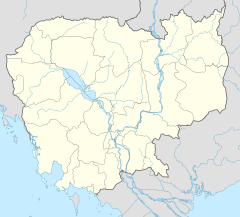Govinda govinda,
Om Sakti Parasakti,
Margazhi is the most beautiful month in the Tamilnadu. Lord Krishna says that he is the month of Margazhi from which one can imagine the beauty and sanctity of this month. Visiting temple in the early hours during the month would be auspicious, which is the tradition old followed by our people over the ages, and it has been proven scientifically that the Ozone layer will be closest to the earth during the month of Marghazi (Sanskrit name of month : Dhanus) which makes our health normal, while having breathing the fresh air in the early morning. All the temples in the month will be open in the early morning and special poojas are conducted to the deities.
During the month of Margazhi, Andal recited 30 versus of Thiruppaavai and followed the Paavai Nombu and attained Lord Mahavishnu.
Manickkavasagar, the saint, recited Thiruvempaavai on Lord Shiva. In these verses, the sait himself visualizes as a Women and sings those verses in the praise of his Lord Shiva during early hours of Margazhi.
Again all these are being followed to ensure that people get benefited by the pure oxygen early in the morning!
The eleventh day after the new moon and the full moon is called Ekadasi and we are supposed to follow the vratham of avoiding rice and eating light on these days. Even if the vratham is not observed on all Ekadasis, it is important to follow it on Vaikunta Ekadasi. Vaikunta Ekadasi is the eleventh day of the waxing moon. Ever year all temples of Mahavishnu have the beautiful ritual of “Sorgavaasal” (Heavenly Entrance) on the early morning of Vaikunta Ekadasi and the whole day is celebrated on a grand scale in these temples
Thiruvadhirai is the star of Lord Shiva and this festival is celebrated in His honour. Arudhra Darsanam is celebrated on the full moon day of Margazhi with special abhishekams to the Siva lingams on the eve of Arudra Natchatra and special alangarams and pujas on the day. The celebrations at Chidambaram are the best with special pujas to the deity Nataraja.
There is also a scientific meaning, which explains the greatness of the Margazhi month. During this month, the ozone layer will be lowered a little bit and because of this, any disease will reduce and gives a healthy body. Let us now what are the main benefits of this Margazhi month and the Thiruppaavai.
During the month of Margazhi, Andal recited 30 versus of Thiruppaavai and followed the Paavai Nombu and attained Lord Mahavishnu.
Manickkavasagar, the saint, recited Thiruvempaavai on Lord Shiva. In these verses, the sait himself visualizes as a Women and sings those verses in the praise of his Lord Shiva during early hours of Margazhi.
Again all these are being followed to ensure that people get benefited by the pure oxygen early in the morning!
The eleventh day after the new moon and the full moon is called Ekadasi and we are supposed to follow the vratham of avoiding rice and eating light on these days. Even if the vratham is not observed on all Ekadasis, it is important to follow it on Vaikunta Ekadasi. Vaikunta Ekadasi is the eleventh day of the waxing moon. Ever year all temples of Mahavishnu have the beautiful ritual of “Sorgavaasal” (Heavenly Entrance) on the early morning of Vaikunta Ekadasi and the whole day is celebrated on a grand scale in these temples
Thiruvadhirai is the star of Lord Shiva and this festival is celebrated in His honour. Arudhra Darsanam is celebrated on the full moon day of Margazhi with special abhishekams to the Siva lingams on the eve of Arudra Natchatra and special alangarams and pujas on the day. The celebrations at Chidambaram are the best with special pujas to the deity Nataraja.
There is also a scientific meaning, which explains the greatness of the Margazhi month. During this month, the ozone layer will be lowered a little bit and because of this, any disease will reduce and gives a healthy body. Let us now what are the main benefits of this Margazhi month and the Thiruppaavai.
www.arthadharma.blogspot.com

















